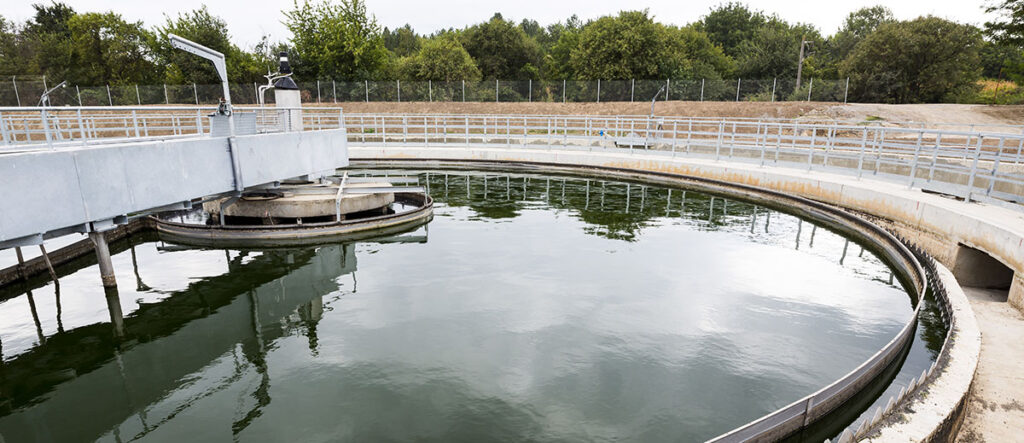
Enzyme Industrial Wastewater Treatment
Are you wondering how you can use enzymes in sewage treatment?
Perhaps you are:
- A livestock food manufacturer.
- A veterinarian.
- Or just an employee at waste management or water treatment facilities.
This guide is for you! It will answer some of your questions and highlight some crucial information.
But first things first:
Is waste treatment crucial?
Waste treatment is a global phenomenon. Still, some organizations don’t invest in effective waste treatment solutions.
In 2018, the total generation of municipal solid waste stood at 292.4 million tons, amounting to 4.9 pounds per person per day. Unfortunately, only 69 million tons of that waste were recycled. Leaving an astounding 224 million of waste untouched.
As the population grows at an alarming rate, the number of waste increases, too. Hence, there is currently a massive demand for infrastructure for waste treatment.
What are the implications and harmful effects of untreated wastewater?
Untreated wastewater contains harmful substances that can be toxic. For instance, you will know that water is contaminated when it has a ‘malefic odor.’ The smell emanates from toxic compounds that have harmful effects on the environment.
There are numerous efficient ways we can use enzymes to treat waste:
- We can use enzymes to treat toxic water
Enzymes for wastewater are perfect for treating toxic water. We can use them to break down and transform harmful contaminants into less harmful substances.
- We can deploy enzymes to keep our environment clean.
Using enzymes is the best practical way of keeping the environment clean. Also, to make wastewater fit for reuse.
- We can use enzymes to replace costly chemicals.
Using enzymes is one of the best ways to reduce chemicals. Besides, it is the most cost-effective way for replacing chemicals.
- No need for enzymes to undergo transformation
One of the notable advantages of using enzymes is that they do not need to undergo any transformation.
- Using enzymes allows you to clean water sources.
One of the most significant advantages of utilizing enzymes is that they will clean water sources thoroughly and improve water quality.
How Are Enzymes Used in Sewage Treatment?
We use enzymes for wastewater treatment in the following ways:
- Break down and transform toxic contaminants – This sewage treatment process will eliminate all the eliminated water toxicity.
But it would be best if you had specific enzymes to catalyze particular pollutants. Or specific concentrations. Let’s look at some of them:
- Inorganic pollutants – include phenols, bi-phenols, methylated phenols, chlorophenols, benzidines, anilines, and other heterocyclic aromatic compounds.
We treat them with oxidoreductases, peroxidases, and oxygenases.
- Organic pollutants include protease, amylase, lipase, cellulase, urease, and xylanases, which work precisely on organic contaminants.
Enzymes for Light Industrial Wastewater Treatment
There are three enzymes for the light you need to consider, Accelobag 2000, Accelobag 2000P, and Accelobag2020. Let’s take a look at each:
- ACCELOBAC 2000 – this enzyme has specifically formulated Aerobic and Anaerobic bacteria strains. It is designed for BOD and COD reduction.
- ACCELOBAC 2000P – this enzyme is perfect for COD reduction in various water treatments.
- ACCELOBAC 2020 – It is perfect for COD reduction in various water treatments, including manufacturing and distilleries.
Why Choose American Biosystems?
If you are looking for experts in enzyme Industrial Wastewater Treatment, you should consider American Biosystems. We offer a variety of affordable Enzyme Products for Aquaculture, waste treatment, and animal nutrition.
We are a rare breed that still believes all products should contain the most delicate enzymes and direct-fed microbial products.
We also believe that you need to use only quality ingredients for sewage treatment. Hence, we go out of the way to ensure that every component that we use is of supreme quality.
American Biosystems works closely with the livestock food manufacturer, veterinarians, or an employee in waste management. We ensure that your farm mix, feed premix, or industrial enzyme formulation is as good as it should be.
American Biosystems offers the following:
- Quality and value
- The finest enzymes
- Quality ingredients
- Environmentally responsible
- Customers worldwide, across 15 countries
- A large pool of experience across different industries and markets
Reach out to American Biosystems today! And find out how to use enzymes to treat your sewage.
Light Industrial Wastewater Treatment
ACCELOBAC® 2000 Product Series
ACCELOBAC® 2000 is a biologically active material containing billions of Aerobic and Anaerobic bacteria capable of high amylase, protease, lipase and cellulase enzyme production.
USES: Specially adapted for moderate levels BOD and COD reduction in industrial waste. For use in lagoons, wastewater treatment plants, and sludge digesters.
ACCELOBAC® 2000P
ACCELOBAC® 2000P is a biologically active material containing billions of Aerobic and Anaerobic bacteria capable of high amylase, protease, lipase, and cellulase enzyme production.
USES: Specially adapted for COD reduction in paper mill wastewater treatment plants, lagoons, and sludge digesters.
ACCELOBAC® 2020
ACCELOBAC® 2020 is a biologically active material containing billions of Aerobic and Anaerobic bacteria capable of high amylase, protease, lipase and cellulase enzyme production.
USES: Specially adapted for COD reduction in a variety of Industrial wastewater treatment plant applications including distilleries, food manufacturing, pulp and paper, and textile operations.

